A schoolteacher and a left-wing union leader will lead the new Peruvian government. The possibility of a future is opening up that incorporates the popular majorities and reverses the extractivist and dependency model. Castillo´s government will have to meet the high demands of the impoverished rural and urban masses that had been mobilized on different conflictive fronts. These conflicts are systemic and have been raging for a long time. The pandemic, on the one hand, and the Peruvian state and the ruling class that tried to respond to it on the other, left the social and political crisis in the open. Peru is the fourth most populous country on the continent and the most devastated by the pandemic in the world.
Having won the second round of elections by few votes, Castillo also faces those elites, who brutally oppose him. They mostly supported Keiko Fujimori, a right or far right candidate, obtaining virtually half of all the votes. The old order, which also contains racist elements, deniers of its own past, architects of internal colonialism, resists and will fight. Other sectors may join them if tensions with Castillo grow. For now, they will probably wait and see.
The challenges are enormous. But it is certain that we are facing an expression that is channeled as part of Our American historical project, and that as such must put into play the struggle of interests, break dependency and advance in the liberation of the creative forces of the Latin American masses.
Let’s look at some antecedents, core processes and latent tensions of the novel situation that occurs in Peru. Latin America once again offers unexpected situations.
Genesis
To understand the present, let’s set a first point of reference in the government of Alberto Fujimori (1990-2000). Initially presented as a candidate without a program, coming from non-traditional families, he wins the elections within the framework of the continental neoliberal offensive. After 1993, his government became a dictatorship. After the self-coup of April 5, 1992, orchestrated together with the military leadership, it reformed the Constitution, paving the way for the measures dictated by the Washington Consensus. He governed controlling all the threads of the state with the support of the armed forces, under the leadership of Vladimiro Montesinos, head of intelligence and in liaison with the violence.
Fujimori senior was reelected in 1995 and 2000, amid state corruption, fraud and terrorism. His government ended with many thousands of dead, disappeared and political prisoners. According to the Truth and Reconciliation Commission, seventy thousand people were killed. It was an authoritarian period that occured just 12 years after the end of the last military dictatorship.
The dissolution of parliament, the closure of the judiciary and the criminalization of the opposition allowed the Fujimori government to carry out its agenda of structural adjustment, privatizations and payment of foreign debt. That earned him the support of finance capital and of Washington.
Fujimori on that way installed the neoliberal system and shaped the political system. As in the entire region, this offered moments of well-being or partial improvement for many citizens but at a very high cost, to soon disappear into thin air. Fujimori has been imprisoned since 2009 for corruption and crimes against humanity. His political-economic-institutional work is standing today, but in crisis. The Castillo government must face this too.
The political crisis in Peru is evident in the presidential sequence that followed. All the presidents, after Fujimori, ended in collapse, mostly due to accusations, causes, trials or jail for corruption. Alejandro Toledo (2001-2006) was a fugitive in the United States, where he was tried and is currently under house arrest. Alan García (2006-2011) committed suicide; Ollanta Humala (2011-2016), was imprisoned; Pedro Pablo Kuczynski (2016-2018) had to resign; Martín Vizcarra (2018 -2020) was fired for bribes; Manuel Merino (November 10, 2020 – November 15, 2020), was removed from office due to popular pressure, accused of having conspired to take power by force.
Elections
Castillo and Fujimori reached the ballot after a first electoral round that had 18 candidates. The four most voted candidates –Castillo, Fujumori, López Aliaga (a kind of “Peruvian Bolsonaro”) and Hernando de Soto (an ultra-liberal technocrat), ran as anti-system candidates. None exceeded 20% of the votes. In the ballotage Castillo took a slight final advantage over Fujimori.
Castillo won in 16 regions out of 23, and obtained impressive rates in the main Andean provinces and indigenous regions, where there is strong resistance to neoliberal devastation (89% in Puno, 85% in Huancavelica, 83% in Cusco, 82% in Ayacucho, 81% in Apurímac, 73% in Moquegua, 71% in Cajamarca, 68% in Huánuco, 66% in Pasco).
Fujimori won in 7 regions, Loreto and Ucayali (Amazon), Tumbes, Piura, Lambayeque, La Libertad and Ica (coastal). The most significant flow of it comes from the Lima region (65%) and the city of Callao (67%), obtaining a difference of more than two million votes over Castillo. This is the area where 40% of the population of the entire country lives.
Who is Keiko Fujimori?
Daughter of the former president, Keiko comes to the election as an experienced candidate, together with the Fuerza Popular party. This was her third election after losing in 2011 and 2016. Keiko spent more than a year in preventive detention (2018-2020), and is still being processed with great probability of being convicted of money laundering and membership in a criminal organization. The prosecution requested 30 years in prison. Odebrecht recognized the payment of bribes for $ 29 million between 2005 and 2014 that served to finance its party.
Meanwhile, Keiko has been head of the political opposition for the past few years, she basically dedicated herself to obstructing governments, cleaning up her image and trying to free her father. She was first lady in the 90s, after her father threw out her mother, Susana Higuchi, and ordered to torture her in the basements of the Intelligence Service (SIE) under the orders of Montesinos (Higuchi had denounced irregularities by the president’s brothers in the use of donations from Japan). Likewise, during that government a eugenic policy was carried out between 1996 and 2000 imposing massive surgical contraception. They forcibly sterilized 314,605 women, most of them peasant and indigenous. Sufficient samples of her figure and points of view.
In this electoral campaign, her proposals consisted of tax exemptions, credits and subsidies such as the “Oxygen Bonus”, a 2,500-dollar payment for each family that has suffered a death from COVID. All this was supposed to be backed by more external indebtment. She was backed by the writer Mario Vargas Llosa (formerly anti-Fujimori), the majority of the business community, the extractivist capital, the financial capital, and multiple public figures such as the majority of the soccer national team, artists, and centrally the mass-media.
The core of their political deployment was to argue that they represent democracy and freedom, and Castillo expressed the return of communism. Billboards could be seen in different cities with the slogan “Communism is poverty”, “Think about your future, not communism”, “Do you know that the blank vote adds to communism?” However, Fujimori’s alternative was the only undemocratic choice. But they won virtually half the votes. This says a lot about the political conditions prevailing and heralds’ conflict on the horizon.
The situation in Peru
The election was in a way a plebiscite on the so-called Peruvian “economic model,” widely praised by liberals around the world, which is based on supposed macro-level soundness. The shortcomings were brutally exposed by the pandemic.
The country has a very high degree of economic informality and social protection is very scarce. In 2020 poverty had an increase of 9.9%, going from 20.2% in 2019 to 30.1% in 2020 and it surely continued to grow. There are 10 million poor people. Neoliberal privatizations and negotiations have made access to health and education very restricted, deepening the inequalities between those who can or cannot pay for quality services. With its more than 187,000 deaths from Covid-19, Peru is the country with the most deaths per million inhabitants in the world.
Peru has based the growth of its economy on the export of minerals. These make up more than 60% of all exports. That correlates with the depleting of resources, destruction of nature, contamination and displacement, causing socio-environmental conflicts. Peru is one of the main copper and silver producers in the world. It also extracts and exports a lot of lead, gold, iron, zinc, among other minerals. The companies carry out their extractive activity without integrating local economies, instead destroying them. Concessions are granted regardless of whether they are located on towns, forests, peasant lands, indigenous communities, wetlands, etc.
Along with indicated development of the political and social crisis, there is also the tireless struggle of the Peruvian people. The teachers have grown in organization and never stopped holding massive strikes. The peasants advanced in their union expressions. We can highlight the so-called Rondas Campesinas, which has its epicenter in the north of the country and is linked to Castillo. Since 2018, massive youth marches against corruption have been held, with an epicenter in Lima and repetitions in the main cities. Finally, there are the anti-extractivist struggles and the resistance in mining enclaves or against agribusiness.
From this rich experience, new indigenous and popular leaderships have emerged and have acceded to local and regional governments. The Aymara ecologist leader Walter Aduviri Calisaya won the governorship in Puno in 2018; Vladimir Cerrón won the governorship of Junín twice, in 2010 and 2018 (later politically persecuted and sentenced in 2019 for the crime of incompatible negotiation for a sanitation work in La Oroya, causing the suspension of his position). Zenón Cuevas did the same in Moquegua. In addition, grass-rooted and popular forces came to power in several provinces (municipalities) particularly in mountains and jungle territories.
Castillo the “teacher”
Son of peasants, the next president of Peru is a 51-year-old rural teacher, barely known before the election for leading a strike in 2017. Of popular and Andean origins, he was born in the province of Chota, in the northern region of Cajamarca where he always lived. Peru Libre, his party, was founded in 2007 and grew by the sum of different regional political forces, especially since 2012. The aforementioned Vladimir Cerrón currently leads it. In that space, multiple popular sectors and groups of the democratic left joined to support their own candidate.
A good part of the population has identified itself with the figure of Castillo and his message of change of the neoliberal economic model. Another important part has supported him because they could in no way support the undemocratic model of Keiko Fujimori. He put on the agenda the need for an agrarian reform “from below.” He proposed economic policies of sovereign industrialization and to stop the looting of the extractivist corporations, which have made their way by eliminating the rural economy. He clearly expressed intentions of coordinating with Russia and other nations to obtain vaccines. He referred at length to the need of fighting corruption starting “at the top.” He proposed the construction of gas pipelines to spread the use of gas, a resource that not many Peruvians have access to. He expressed important advances regarding environmental protection, social and reproductive rights of women or the definitive recognition of a Plurinational State. He proposed a mass literacy program and assured that he will allocate 10 points of GDP to education and the same amount to health.
He proposed a tax on surpluses, and that royalties be awarded based on sales, as is the case in Chile and Colombia. There is talk of redistribution of wealth on a daily basis.
His opposition to abortion, equal marriage, gender issues and rights of the LGTB+ community stands out.
His proposes in general terms a nationalist, industrialist, sovereign, and popular program. His project is linked to the latest wellness benchmark for most of the population: the nationalist military government of Velasco Alvarado (1968-1975). The water, mining, fishing and hydrocarbon wealth of Peru explains the power of convocation of an apparently simple slogan: “no more poor in a rich country”.
Forward scenarios
Based on the recent Peruvian experience, an image reemerges: that Castillo drastically changes his proposal and betrays his own speech, history and all his political force. Alejandro Toledo and Ollanta Humala did exactly that. They came to power as popular candidates and were immediately co-opted by the elites. A priori, we assume that this will not happen. If given, it would mean an unprecedented level of social and political conflict.
The idea of a coup should be discarded. There are no conditions for that to happen. Fujimori is still trying to establish that Castillo won through fraud. In relation to that, the exonerated military sent letters to the Military Forces calling to prevent this from happening. The letters were rejected by President Francisco Sagasti himself in a message to the Nation issued on June 18.
Before the date of assuming power (July 28,) Castillo already faces a war of siege and attrition that is produced by the combination of mass media and judicial and parliamentary corporations, which try to delegitimize, to remove legality and overshadow the victory.
A last highlight is the geopolitical projection. The desire for an alliance with Russia structured around the geopolitics of vaccines has already been mentioned. At the same time, the orientations that place Castillo in line with the popular governments of Our America of the 20th and 21st centuries are marked. He has expressed his will to help to rebuild UNASUR and will be critical of the actions of the OAS. Political relations with Bolivia, MAS and Evo Morales are evident and solid. Castillo will surely manifest himself as an ally of Argentina and Ecuador. He will have a strategic alliance with Venezuela, and probably will be confronted by Bolsonaro. There will be tensions with Colombia, Chile and Paraguay.
This may upset an important aspect in the US maneuver related to the Asia-Pacific pivot. Peru is a central actor in the so-called Pacific Alliance, a FTA scheme, formed by Chile, Colombia, Mexico and Peru, under the leadership of the US. It is an important piece for the US’ possible reinstatement of the former Trans-Pacific Partnership (TPP), now called the Comprehensive and Progressive Agreement for Trans-Pacific Partnership (CPTPP). However, this project could mean a great deal for Peru. Abandoning it would imply to deepen of the confrontation with the concentrated sectors of the Peruvian economy. Maintaining this framework under new conditions could help to counterbalance the local political situation, enable transformative action at other levels by alleviating international imperial pressures and tension with internal elites.
The elites fear that progress could be made in the nationalization of the mining and energy sectors. Except for specific cases, given the political and social situation of the country, this does not seem to be the first choice for Castillo and Perú Libre. Progress will surely be made on renegotiation of contracts, review of compliance with environmental and legal regulations. Castillo obtained a high vote in the areas of greatest socio-environmental conflict and at the same time needs an economy on the move. This is a very complex problem knot. These conflicts will continue.
Castillo has already shown signs of restraint. He declared that he has a fluid dialogue “with the national business community, which is showing support for the people. We will create a government that respects democracy, the current Constitution, with financial and economic stability”. Members of the future government said that they will come out to demand that extractive companies comply with international standards of Environmental Impact Studies and that they will charge more taxes. Those who do not accept the criteria must leave and there are already interested companies to replace them, they said. Pedro Francke, a seasoned World Bank economist, is already listed as one of Castillo’s top adviser. Francke supports fiscal prudence and said they will fight tax evasion and there resources will be obtained to support subsidized social spending.
Due to the few votes obtained in the first round, Castillo will be a minority in Congress (28 benches out of 130). Any radical measure that does not have unquestionable massive support will find a wall hard to break.
In any case, Castillo must respond to the expectations created in the population that voted for him. The development of a more egalitarian and inclusive project is expected, backed up by the empowerment of the popular and marginalized sectors. The concession of new rights will be an instrument of defense and consolidation of welfare and a way to avoid future setbacks. The recognition of Plurinational Peru is at the same time a confrontation with decadent neo-colonial and racist tendencies. The new government must get the country out of a crisis. Some hope that Castillo at the same time will moderate radical pressures from the left. In one way or another, all this will be enough to unleash popular forces and reinforce Our American integration that must take off post-pandemic while dealing with confrontation by oligarchic elites.








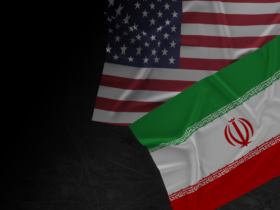
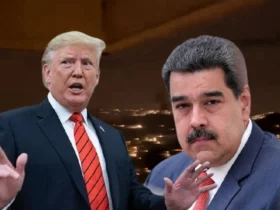
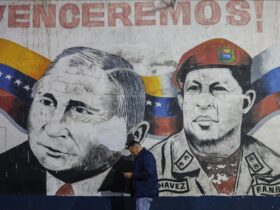
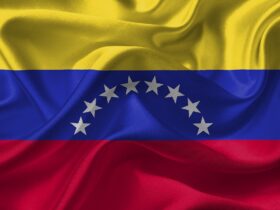

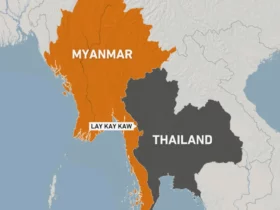
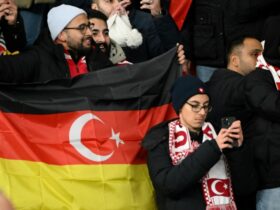
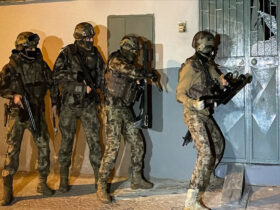

Leave a Reply